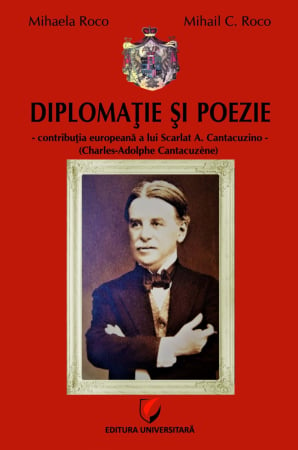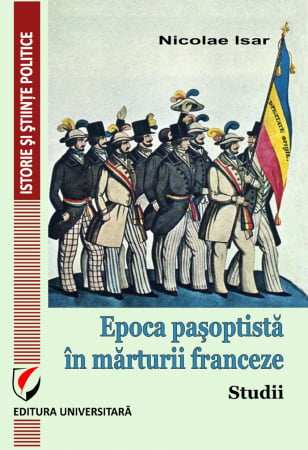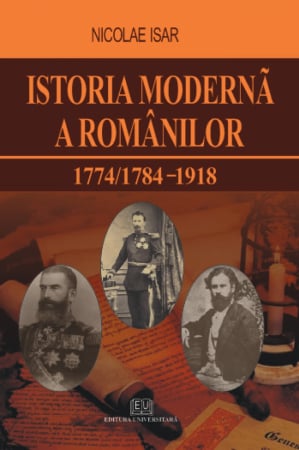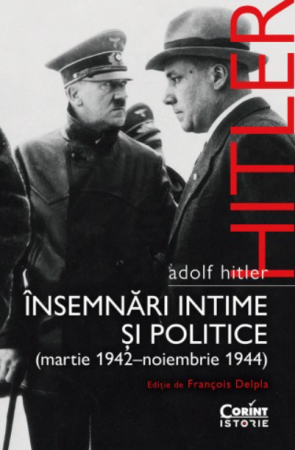Manuscript proposals: info@editurauniversitara.ro / 0745 204 115 //// Tracking orders Individuals / Sales:0745 200 718 / 0745 200 357 Orders Legal entities: 0721 722 783
Publisher: Evrika
Author: Paul Magheru
Pages: 262
Publisher year: 2021
ISBN: 978-606-95129-8-2
Product Code:
9786069512982
Do you need help?
0745 200 718
/
0745 200 357
- Description
- Authors
- Content
- More details
- Where to find it
- Reviews (0)
"Apart from goodness, the true and most important adornment of the soul I consider to be the love of the book for everyone."
(Baldassare Castiglione, Curteanul)
The history of universal culture and literature for children has been structured by itself in 11 chapters, how many artistic currents have followed in their historical evolution from antiquity to today. From a possible, common name index, we do not think that any of the most important writers in the world, recommended by school curricula and textbooks for primary and secondary education, would be missing. (From the Word before).
Such a book should not be missing from the shelves of any personal or public library, where it can find its rightful place, as a kind of ambulatory encyclopedia of the history of universal culture and literature for children. (Din Postfata).
"The history of universal culture and literature for children" is a work accessible especially to children, but not limited, as addressability, to them; structured in 11 chapters, each corresponding to the literary currents essential for study and relevant in socio-cultural and literary context, but also in one that highlights the various methods of assessment and examination of children's knowledge in state education systems today - but, certainly, it is not only in this context that a book such as the History of universal culture and literature proves its usefulness.
The 11 chapters, as I said before, differ if we refer to the size - we wanted not a perfect symmetry and visual, but we aimed to provide the necessary space for manifestation and explanation for these currents depending on the division into genera, species, subspecies , authors and other important personalities for the current in question, even in relevant geographical areas and, not least, in countries as exponents of the places where the major literary currents were born or flourished. Also, the social-historical context in which they are placed is a real help to the reader - whether he finds out these details for the first time, or just recapitulates them using memory - because this way it can be explained more logically and can be retained. the way in which the daily life of a city (in the extremely broad sense of the term) can and does influence what is written and how it is done, even the life of writers, their way of obedience or revolt against the rule and norms or laws written or unwritten and so on.
The history of universal culture and literature for children is the compressed version and explained as succinctly as possible of the surrounding world in all its complexity: from the written word and with it, with the stories it reclaims and carries on, it consolidates and The history. And from it follow the obvious consequences, reflected on culture and literature - these can be easily identified, in terms of currents and species, by the key elements present, by the writing style, by concerns and morals.
Anca Zaharia
(Baldassare Castiglione, Curteanul)
The history of universal culture and literature for children has been structured by itself in 11 chapters, how many artistic currents have followed in their historical evolution from antiquity to today. From a possible, common name index, we do not think that any of the most important writers in the world, recommended by school curricula and textbooks for primary and secondary education, would be missing. (From the Word before).
Such a book should not be missing from the shelves of any personal or public library, where it can find its rightful place, as a kind of ambulatory encyclopedia of the history of universal culture and literature for children. (Din Postfata).
"The history of universal culture and literature for children" is a work accessible especially to children, but not limited, as addressability, to them; structured in 11 chapters, each corresponding to the literary currents essential for study and relevant in socio-cultural and literary context, but also in one that highlights the various methods of assessment and examination of children's knowledge in state education systems today - but, certainly, it is not only in this context that a book such as the History of universal culture and literature proves its usefulness.
The 11 chapters, as I said before, differ if we refer to the size - we wanted not a perfect symmetry and visual, but we aimed to provide the necessary space for manifestation and explanation for these currents depending on the division into genera, species, subspecies , authors and other important personalities for the current in question, even in relevant geographical areas and, not least, in countries as exponents of the places where the major literary currents were born or flourished. Also, the social-historical context in which they are placed is a real help to the reader - whether he finds out these details for the first time, or just recapitulates them using memory - because this way it can be explained more logically and can be retained. the way in which the daily life of a city (in the extremely broad sense of the term) can and does influence what is written and how it is done, even the life of writers, their way of obedience or revolt against the rule and norms or laws written or unwritten and so on.
The history of universal culture and literature for children is the compressed version and explained as succinctly as possible of the surrounding world in all its complexity: from the written word and with it, with the stories it reclaims and carries on, it consolidates and The history. And from it follow the obvious consequences, reflected on culture and literature - these can be easily identified, in terms of currents and species, by the key elements present, by the writing style, by concerns and morals.
Anca Zaharia
Paul Magheru
FOREWORD / 7
HISTORY OF ANCIENT CULTURE AND LITERATURE / 11
CULTURE AND LITERATURE OF ANCIENT GREECE / 29
LATIN CULTURE AND LITERATURE / 49
LITERATURE OF THE MIDDLE AGES / 63
RENAISSANCE / 81
CLASSICISM / 107
THE ENLIGHTENMENT / 121
ROMANTISM / 141
REALISM / 167
MODERNISM IN LITERATURE / 219
POSTMODERNISM / 243
AFTERNOON / 257
HISTORY OF ANCIENT CULTURE AND LITERATURE / 11
CULTURE AND LITERATURE OF ANCIENT GREECE / 29
LATIN CULTURE AND LITERATURE / 49
LITERATURE OF THE MIDDLE AGES / 63
RENAISSANCE / 81
CLASSICISM / 107
THE ENLIGHTENMENT / 121
ROMANTISM / 141
REALISM / 167
MODERNISM IN LITERATURE / 219
POSTMODERNISM / 243
AFTERNOON / 257
The history of universal culture and literature for children is an abbreviated, simplified and accessible version of a treatise on universal and comparative literature, coordinated by us and written in collaboration with three colleagues from the Faculty of Letters of the University of Oradea. The book has three destinations and is addressed to students, teachers and parents.
Since the third grade, after learning to read and write well, students hear and learn about stories, fairy tales, legends, short stories, poetry, prose, dialogue, lyrical text, narrative text, characters, Romanian writers, foreign writers. As supporting texts or additional readings, primary and secondary school students are recommended a lot of foreign and Romanian writers, not necessarily in chronological or value order: Lyman Frank Baum (The Wizard of Oz), Nicolae Nosov (The Adventures of Habarnam), H. Chr. Andersen (Stories), Lewis Caroll (Alice in Wonderland), Carlo Collodi (Pinocchio), Brothers Grimm (Stories), Victor Hugo (Gavroche, Cosette), Jack London (White Corner), Rudyard Kipling (The Jungle Book) ), Charles Perrault (Stories), La Fontaine (Fables), Hector Malot (Alone in the World), Edmondo de Amicis (Heart, Child's Heart), Jonathan Swift (Gulliver's Travels), Daniel Defoe (Robinson Crusoe), Antoine de Saint-Exupery (The Little Prince), Walter Scott (Ivanhoe), Oscar Wilde (The Happy Prince), Mark Twain (From Childhood), Agatha Christie (Ten Little Blacks), JK Rowling (Harry Potter), etc.
Romanian literature was no less generous in writers and works for children. From fairy tales and stories, from our classic writers to the present day, Romanian literature has not ceased to delight whole generations of readers. No student can miss the cycles of novels recommended and the school curriculum, La Medeleni by Ionel Teodoreanu, The Cherries of Constantin Chirita and many other works and writers. The collective memory instantly retains at least Radu Tudoran (All the canvases up), Petre Ispirescu, Gelu Naum (Books with Apollodorus), Theodor Constantin (A star will fall at midnight), Cezar Petrescu, Emil Garleanu, etc.
In lower secondary education, in grades V-VII the subject of Romanian literature is organized on thematic learning units, so that from the eighth grade it is structured on literary genres, with the corresponding operative notions and reading recommendations from Romanian and foreign writers.
As for us, we considered that the most appropriate presentation of universal culture and literature for children would be on literary currents, in the broad sense of this term as a group of works and writers, brought together by common features of ideological-aesthetic, stylistic and practically and which, being aware of these relatives, often expresses it polemically through literary manifestos against some old, obsolete currents. In this way, the work was structured by itself in 11 chapters, how many currents have followed one another in their historical order from antiquity to the present day. From a possible, common name index, we believe that none of the most important writers in the world, recommended by school curricula and textbooks for primary and secondary education, would be missing.
To some I have dedicated more or less pages, to others I have mentioned only in bold letters, so that the readers know that they exist and that they are expected with patience and use. Most of the writers were accompanied by some bio-bibliographical data, convinced by the objective, social-historical and biographical determination of any writing. No matter how much autonomy, impersonality or "art for art's sake" literature claims, we believe that there is no writer who could not say of one character or another, just like Flaubert of Mrs. Bovary, that "this is me."
It could be reproached to our historical-literary syntheses that they are too difficult for some students even in high school. We mention that for high school graduates we have developed a book of Syntheses of Romanian language and literature for success in high school and in life, in its third edition, thanks to Evrika Publishing House in Bucharest, which I thank for their collaboration and hosting. In fact, we mentioned from the beginning that our new book has three recipients: students, teachers, parents.
Where, for objective reasons, some students do not have a way to know or understand a certain thing, the teacher intervenes who, depending on the age and class categories, explains on the children's understanding, having at his disposal this book, the most difficult works or writers. Our adventure through the history of universal culture and literature was also encouraged by the Litera Mica collection (published by Litera), inaugurated a few years ago by illustrated stories with people who changed the world (Mahatma Gandhi, Socrates, Marco Polo, Nadia Comaneci, Galileo Galileo and many others).
From these famous people the little readers can usefully remember that the heroes were once children. The same publishing house recently launched another collection of illustrated books on world history, in the same order in which we present it in literary terms. We have endeavored not to use in this book any term (where any appears, it is explained on the spot), no notion of history, theory or literary criticism, no writer who is not recommended by school curricula and textbooks, including alternative. We believe that an eighth grade graduate who takes the national assessment exam before him or her should master this book as a crowning of middle school education and as a reading guide or accompaniment for high school, vocational, or university education and for life that Wait.
Since the third grade, after learning to read and write well, students hear and learn about stories, fairy tales, legends, short stories, poetry, prose, dialogue, lyrical text, narrative text, characters, Romanian writers, foreign writers. As supporting texts or additional readings, primary and secondary school students are recommended a lot of foreign and Romanian writers, not necessarily in chronological or value order: Lyman Frank Baum (The Wizard of Oz), Nicolae Nosov (The Adventures of Habarnam), H. Chr. Andersen (Stories), Lewis Caroll (Alice in Wonderland), Carlo Collodi (Pinocchio), Brothers Grimm (Stories), Victor Hugo (Gavroche, Cosette), Jack London (White Corner), Rudyard Kipling (The Jungle Book) ), Charles Perrault (Stories), La Fontaine (Fables), Hector Malot (Alone in the World), Edmondo de Amicis (Heart, Child's Heart), Jonathan Swift (Gulliver's Travels), Daniel Defoe (Robinson Crusoe), Antoine de Saint-Exupery (The Little Prince), Walter Scott (Ivanhoe), Oscar Wilde (The Happy Prince), Mark Twain (From Childhood), Agatha Christie (Ten Little Blacks), JK Rowling (Harry Potter), etc.
Romanian literature was no less generous in writers and works for children. From fairy tales and stories, from our classic writers to the present day, Romanian literature has not ceased to delight whole generations of readers. No student can miss the cycles of novels recommended and the school curriculum, La Medeleni by Ionel Teodoreanu, The Cherries of Constantin Chirita and many other works and writers. The collective memory instantly retains at least Radu Tudoran (All the canvases up), Petre Ispirescu, Gelu Naum (Books with Apollodorus), Theodor Constantin (A star will fall at midnight), Cezar Petrescu, Emil Garleanu, etc.
In lower secondary education, in grades V-VII the subject of Romanian literature is organized on thematic learning units, so that from the eighth grade it is structured on literary genres, with the corresponding operative notions and reading recommendations from Romanian and foreign writers.
As for us, we considered that the most appropriate presentation of universal culture and literature for children would be on literary currents, in the broad sense of this term as a group of works and writers, brought together by common features of ideological-aesthetic, stylistic and practically and which, being aware of these relatives, often expresses it polemically through literary manifestos against some old, obsolete currents. In this way, the work was structured by itself in 11 chapters, how many currents have followed one another in their historical order from antiquity to the present day. From a possible, common name index, we believe that none of the most important writers in the world, recommended by school curricula and textbooks for primary and secondary education, would be missing.
To some I have dedicated more or less pages, to others I have mentioned only in bold letters, so that the readers know that they exist and that they are expected with patience and use. Most of the writers were accompanied by some bio-bibliographical data, convinced by the objective, social-historical and biographical determination of any writing. No matter how much autonomy, impersonality or "art for art's sake" literature claims, we believe that there is no writer who could not say of one character or another, just like Flaubert of Mrs. Bovary, that "this is me."
It could be reproached to our historical-literary syntheses that they are too difficult for some students even in high school. We mention that for high school graduates we have developed a book of Syntheses of Romanian language and literature for success in high school and in life, in its third edition, thanks to Evrika Publishing House in Bucharest, which I thank for their collaboration and hosting. In fact, we mentioned from the beginning that our new book has three recipients: students, teachers, parents.
Where, for objective reasons, some students do not have a way to know or understand a certain thing, the teacher intervenes who, depending on the age and class categories, explains on the children's understanding, having at his disposal this book, the most difficult works or writers. Our adventure through the history of universal culture and literature was also encouraged by the Litera Mica collection (published by Litera), inaugurated a few years ago by illustrated stories with people who changed the world (Mahatma Gandhi, Socrates, Marco Polo, Nadia Comaneci, Galileo Galileo and many others).
From these famous people the little readers can usefully remember that the heroes were once children. The same publishing house recently launched another collection of illustrated books on world history, in the same order in which we present it in literary terms. We have endeavored not to use in this book any term (where any appears, it is explained on the spot), no notion of history, theory or literary criticism, no writer who is not recommended by school curricula and textbooks, including alternative. We believe that an eighth grade graduate who takes the national assessment exam before him or her should master this book as a crowning of middle school education and as a reading guide or accompaniment for high school, vocational, or university education and for life that Wait.
www.editurauniversitara.ro
If you want to express your opinion about this product you can add a review.
write a review
Customer Support Monday - Friday, between 8.00 - 16.00
0745 200 718 0745 200 357 comenzi@editurauniversitara.ro

![History of universal culture and literature for children - Paul Magheru [1] History of universal culture and literature for children - Paul Magheru [1]](https://gomagcdn.ro/domains/editurauniversitara.ro/files/product/large/history-of-universal-culture-and-literature-for-children-paul-magheru-3098-2350.png)














